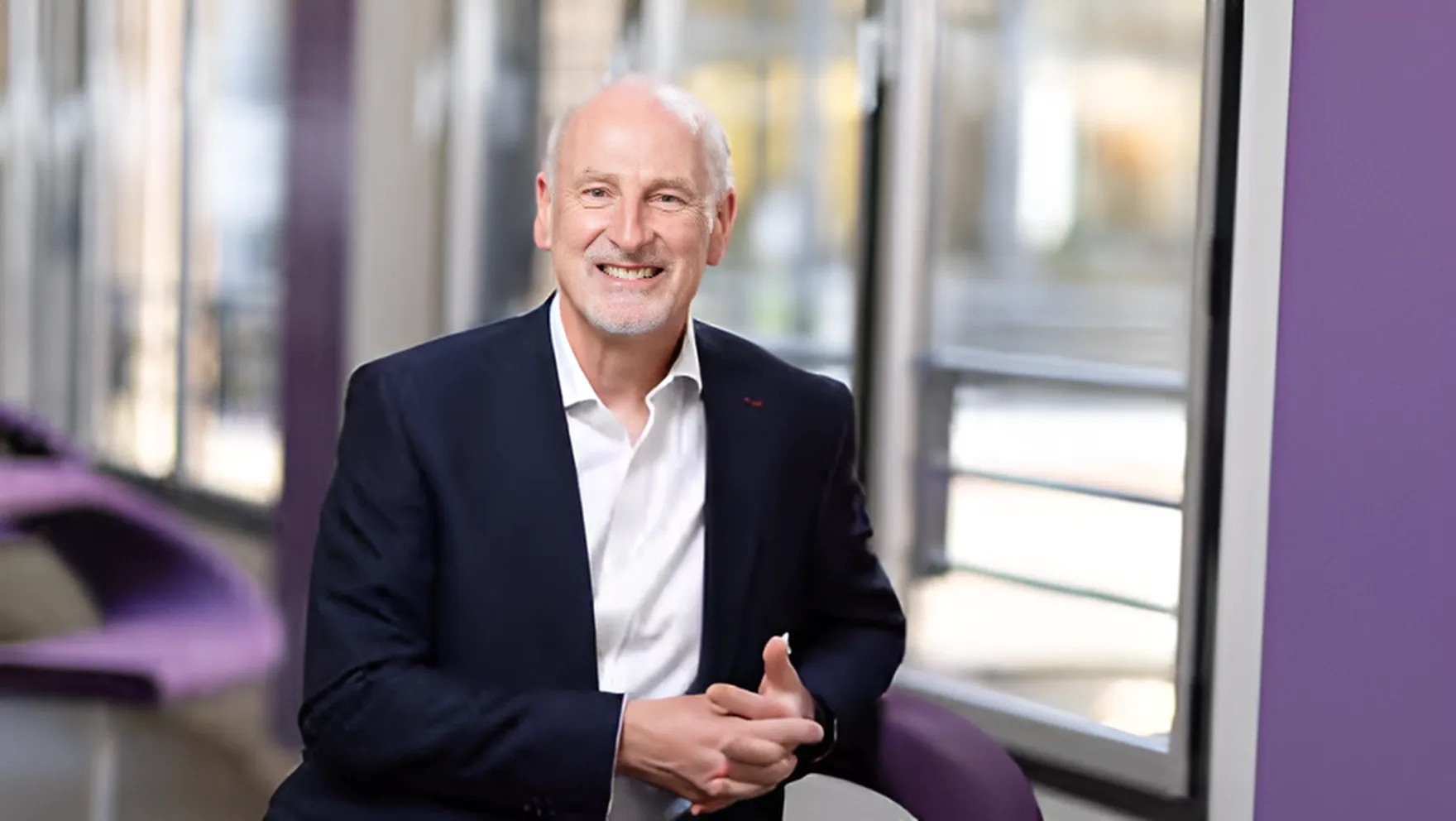Texas Instruments’ Innovation Mandate
Texas Instruments CEO Rich Templeton is fond of saying that in the technology business, if you’re not changing, you’re falling behind. He knows a little something about that.
A savvy businessman and engineer, Templeton has spent his entire 32-year career at TI, the past eight as president and CEO. Since taking the helm, he has been steadily reshaping the semiconductor manufacturer, moving it away from other technologies to focus on analog and embedded-processing growth.
Innovating the business model has helped transform the $13.7 billion company, producing sustainable results and strengthening its core businesses.
Dallas-based TI has come a long way since it first began selling tricked-out calculators 45 years ago. Under Templeton and his predecessor, the company has been aggressively buying or selling companies to align with its emphasis on analog and embedded processors. Since 1996, TI has acquired 33 companies and divested at least 18 — from defense to liquid-crystal-display operations — that were not central to this razor focus.
Today, the company’s analog chips are in automobiles, kitchen appliances, air conditioners, notebook computers, and smartphones. They make medical devices like ultrasounds portable and enable intelligent thermostats to adjust to user habits and patterns. They also have vast applications for cloud computing and energy efficiencies not seen before.
The possibilities, Templeton says, seem endless. “Literally every piece of electronic equipment you have at work or home has at least one, if not multiple, analog chips,” he says. “We have a chance to sell something to every customer in the world. The number of companies that can say that are pretty limited.”
Innovative Decision Making
Many wonder how an 82-year-old company with 35,000 global employees remains nimble enough to keep reinventing itself. Templeton says the key is to “not be afraid of where you want to go.” His other secret seems to be breaking through hierarchical obstacles to innovation.
Last year the company caught some industry experts off guard when it announced it was shifting its OMAP product line focus away from smartphones and tablets toward a broader consumer market.
“The outside world sees this as an event that occurs in a more granular way,” he says. “Our OMAP 2012 announcement was the last step [in an ongoing plan] to complete that. For us it’s very logical with what we’ve been seeing in the last five to six years, but to the outside world it just looks like a big momentous announcement.”
Templeton acknowledges that it’s a significant shift and impacts a lot of people, but it’s a change that management and employees knew was coming. In 2006-2007, his leadership team began examining what it meant to be an analog and embedded company — and what it didn’t mean.
By early 2008, the company was offering hands-on workshops for a broad section of its employees to show them what the future looked like.
“We wanted to get everybody on board,” he says.
Templeton prefers to manage strategic direction in a non-hierarchal fashion, delivering the message to a broad community of employees using the company’s communication groups. He says repeating the message at least on a quarterly basis through broadcast company meetings or other avenues helps engage employees. It also prevents diluting or distorting the meaning.
“When the message is passed down, it’s potentially altered,” he says. “You don’t know what will come out on the other end. I don’t like to depend on hierarchal communication.”
Templeton is a proponent of involving his entire senior leadership team in the decision-making process. Once they’ve hashed out the issues, they pull in about 35 other division heads to “weigh, debate, and persuade” and make sure everyone is well aligned on the company’s direction. The discussions are always candid and data-driven. Sometimes they result in hard decisions to get into better businesses.
Templeton’s goal through this lateral decision-making process is to align the company’s objectives with what’s good for customers and shareholders.
“They’re one in the same,” he says. “If we’re making decisions that will make the company more valuable, then we have to communicate to (the public) why the decision makes sense in the long term. If the company is not growing and adding more value, then it won’t do well by employees or customers or shareholders.”
Strong Communication
Templeton has a reputation as a good communicator inside and outside the walls of TI. Brian Toohey, president of the Washington, D.C.-based Semiconductor Industry Association, where Templeton serves on the board, says the CEO is an “incredible communicator and extraordinary mix of leadership and knowledge” that benefits not only TI, but the entire semiconductor industry.
“He’s the real deal,” Toohey says.
Good Communication Wasn’t Always a TI Trademark
The early 1980s were a difficult time under then-chairman Mark Shepherd Jr. and president J. Fred Bucy, who was called abrasive and autocratic. The company posted its first-ever revenue loss of $145 million in 1983 because of the recession and an unexpected slump in demand for its home computer, a market that TI eventually exited.
Some analysts call those the dark days for TI. But things brightened up in 1985, when Jerry Junkins was named president and CEO. Junkins is credited with loosening up the corporate culture and encouraging innovation, while helping reposition the company to better compete in the 1990s.
“The personality of the CEO quickly permeates the company,” says Dallas business analyst David Johnson, who has followed TI for nearly three decades. “Junkins did an overnight turnaround. This is the group that Templeton came from, the new wave. They had a laser-like focus on [digital signal processors]. That was going to be the great new thing, and they sold all of this great technology. That’s the mold that Templeton came from.”
Junkins died of a heart attack on a business trip in 1996, and Tom Engibous, a 20-year TI veteran, was named CEO. For 15 years Templeton worked with Engibous, who helped make over the company from a broad-based conglomerate to a semiconductor company focused on making chips for the signal-processing markets that have fed the wireless and Internet revolutions.
After years of grooming, Templeton stepped into the president and CEO roles in 2004, and was named board chairman in 2008. His egalitarian style and affinity for change, along with sound business strategy, have made him a leader’s leader.
He keeps his finger on the company’s pulse by traveling across the globe to visit with some of their 90,000 customers. He believes the best way to know what’s going on inside a big company is to spend time outside of it, and he encourages his managers to do the same. He also schedules regular employee roundtables to hear about the issues on his employees’ minds.
Today Templeton says he’s fortunate to work in an industry that has such a great impact on people’s lives. It’s also an industry that’s changing rapidly, but TI’ers (as the employees are called) are engrained in a culture that expects adaptation to economic cycles and technology shifts.
“The idea of innovating and looking forward to new problems to solve for our customers is at the heart of what we do,” he says. “As a result, we’ve got as many leaders that are more afraid of not changing than if we are. That’s wise.”
Because without change, there can be no innovation.
Bold Moves When it comes to innovation and strategic change, Rich Templeton has learned this lesson: Don't be afraid to make unexpected moves when they make sense. “We’ve done a pretty good job over the past 15 years, seeing where the world is going and knowing what we’re good at and where we need to move,” he says. “We weren’t afraid to leave businesses that wouldn’t be successful in the future.” MoneyGram CEO Pam Pat- sley has served on TI’s board since 2004 and says she has seen Templeton lead the company through challenging times, basing his decisions on many perspectives and a lot of data. When TI acquired National Semiconductor for a whopping $6.5 billion in fall 2011, industry pundits questioned whether it was good move. Templeton called it a “bold, correct move,” given the economy, the opportunity, and his vision for the company. “I don’t think it’s a risk if you look at the cycles,” he says. “Usually most people are cautious at the bottom, and that’s exactly when you should logically be doing the opposite. One of the benefits (at TI) is we have people who have worked together a long time. It’s a very experienced team, and we’ve seen the ups and downs. This organization is not intimidated by ups and downs.”



